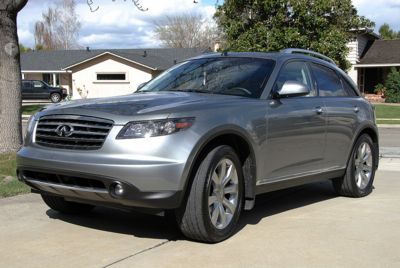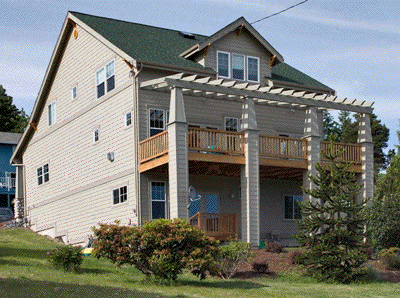One of the most important articles to read and understand…
How much house should you finance? Follow the 20/28/36 rule.
Eric Janszen
Jan. 23, 2007
A few months ago I wrote How Much of Your Car Should You Finance? Zero percent. I criticized an article in another publication advising readers to finance 100% of a new car, a depreciating asset, with debt. I advised you to buy the smallest, safest used car you can afford to buy with cash–a “shitbox”–rather than a new car you need to borrow money to buy. If you don’t have the cash to buy a car that meets your safety standards, then finance as little of a more expensive, safer car as possible.
Taking on debt that does not increase your net worth long term is self-inflicted slavery. You are putting a lien on your future income. Mortgage debt–debt secured by the value of your home–is a better form of debt because as of 1986 tax on mortgage interest is deductible. Still, there is a limit to how much mortgage debt is financially good for you, and the name of the game is still: get rid of the debt.

The new symbol of wealth: cars you can buy with cash, like this.

The old symbol of wealth: cars you cannot buy without debt.

In case you’re curious, my politically incorrect car. If you stick to buying cars with cash,
with the money you save by not paying interest, eventually you can buy new with cash.
Today I received a note from an iTulip reader who is a lender based in Chicago (thanks, Andrew). He points me to an article that really got me going. Typical advice on how to purchase too much house, way too much. Today’s column by Jack M. Guttentag, The Mortgage Professor, says:
Facts are facts: Sometimes, you’ve got less cash on-hand than you’d like. Should you use your cash to pay points – or utilize it to make a larger down payment? Let’s discuss this thorny question.
A reader writes: “I’ve been shopping on-line for a 30-year fixed-rate mortgage. All the sites ask you how much you want to put down, and all offer different combinations of interest rate and points. I have cash of only $15,000 to apply to either down payment or points on my $500,000 purchase, but obviously I can’t use it for both. Where do I get the biggest bang for my buck?”
The Dilemma of Down Payment vs. Points
Using your cash to pay points lowers the interest rate. (Points are upfront payments expressed as a percent of the loan). Using your cash for down payment reduces the amount you must borrow, and might or might not reduce the rate on the second mortgage if there is one, or reduce the mortgage insurance premium if there isn’t.
Whoa. Hold on a minute, professor. Let’s start by asking whether someone with only $15,000 available for a down payment can afford a $500,000 mortgage. That $15,000 represents a 3% down payment. It should be 20% or $100,000 for a $500,000 home. If your reader only has $15,000, he can afford a $75,000 condo.
How do I know? Let’s go back in time to the days before the Frankenstein Economy, when accountability between lender and borrower was personal versus “transaction based.” If you’re looking for a “New Era” catch phrase to justify today’s credit bubble the way “public venture capital” was thrown around toward the end of the technology stock bubble in the late 1990s, “transaction based lending” is it. What nonsense, as if “transactions” didn’t occur when loans were made before the era of indiscriminate securitization. Lenders ran out of credit-worthy borrowers in the Frankenstein Economy and started to lend $500,000 to people with only $15,000, or $500, or nothing saved for a down payment. The banks, in the process of hedging the added default risk they took on when making these loans, versus the pre-securitization era when they lent money only to borrowers with sufficient savings and income, crudded up the financial markets with Risk Pollution.
Here’s how a HomeStrength loan is sold on the GMAC Mortgage site:
Have you been putting off homeownership because you haven’t saved enough for a down payment and closing costs? Thanks to the HomeStrength plan, you can stop saving and start shopping today.
The program provides a second loan for up to 4% of the property value, which you can use for the down payment and closing costs. All you need to contribute is $500 — your financing covers the rest. And the best part? The second loan requires no monthly payments and is completely forgiven after 10 years of on-time mortgage payments.
I don’t have anything against poor people owning homes. I was too poor to own a home when I got out of college, but it did not occur to me to try to buy a home with 3% down, even if lenders existed in those days who were been stupid enough to lend me the money to buy it. Why? Because that would have exposed me to unnecessary financial risk. It’s fun to think the laws of finance have been repealed and that, as in 1999, “it’s different this time.” But it isn’t.
Here’s the time-tested, it’s not “different this time,” standard 20/28/36 rule for mortgage affordability:
- Down payment 20%
- Monthly mortgage payments will not exceed 28% of your gross annual income
- Your total monthly payments for all debt including your mortgage payments will not exceed 36% of your gross annual income
Here’s a handy calculator.
The name of the game is not to maximize how much home you can buy with the most money you can borrow as carelessly as a bank will lend it. Just because a lender is stupid doesn’t mean you have to be. The lender doesn’t care how stressed out you get trying to make a bigger mortgage work, just as a used car salesman doesn’t care if he sells you up to a tricked out version of the car you went into the dealership to buy so he can earn a bigger commission. They don’t care about you. So don’t listen to them. The name of the game is to build as much equity as quickly, comfortably, and safely as possible.
Home equity as the primary source of wealth in the U.S. However, when asked to rank sources of wealth for affluent households by the June 2001 ORCI survey, only four in ten Americans (40%) correctly identified equity in one’s home as the most important source. “Contrary to the belief of many, those with modest incomes can, over time, build wealth,” noted Stephen Brobeck, CFA’s Executive Director. “The easiest way to do so is to buy a home, faithfully make the mortgage payments, and be cautious about borrowing against the accumulating home equity,” he added.

Affordable first house. Buy with pride.

Unaffordable first house. Your lender loves it.
Step 1: Buying your first home*. Buy a modest house as soon as you can. That means a house that’s not as nice as the one you grew up in, and one that needs some work. But you’re young and smart. Swing a hammer. Slop some paint. It’s one that you can afford using the 20/28/36 mortgage rule. Park your shitbox proudly in the driveway. Consider a variable rate mortgage that doesn’t adjust for seven years. You may find it cheaper than a fixed rate 30 year mortgatge. You’re going to move in four to six years anyway–this house is just a way to get to the house you want but can’t afford yet. No, not some suicide loan with a teaser rate that adjusts after the second full moon in the first year of the dog or whatever. If you are smart enough to be reading this but can’t understand a loan you’re offered then it’s garbage. Don’t buy it. Good loans are easy to understand.
Buy in a town with a good school system if you can because the price will tend to hold up better during inevitable real estate downturns. Don’t buy a house at the top of the market in a lousy neighborhood. During the mid-1990s housing downturn in Massachusetts, for example, homes in towns with good school systems declined 10% versus as much as 80% in towns with a weaker tax (income) base. You’ll find yourself waiting ten years or more to break even. If you buy in a higher average income town at the top of the market, as occurred in most areas of the US in the middle of 2005, you will find yourself underwater–that is, your mortgage is greater than the value of the house–but you won’t have to wait as long for the price to recover than if you buy a bigger house in a lower average income town. If you don’t mind the minor inconvenience of managing a tenant or two, I recommend a two or three family house as a first home because your tenants will pay between 50% and 80% of your mortgage. That means you earn equity and save for your next home faster and can live in a better home than you can if you have to cover the whole mortgage yourself.
Step 2: Buying your second home. Four to six years later, sell the modest house and use the profit as a down-payment on your first good house. Again, look into an adjustable mortgage that stays fixed for seven years.
Step 3: Buying your third home. Four to six years later, sell the good house and use the profit as a down-payment on a great house. Take out a 15 year fixed rate mortgage and pay if off in ten years.
Using this method, by age 50 you’ll own a great home free and clear, while riding the real estate cycle up and down and without having to win the lottery.
What not to do:
- Nothing. Wait for money to fall out of the sky. As you can see, the process takes time. Starting a 20 plus year process works better when you’re 25 than when you’re 40. (See coveat*, below.)
- Buy more house than you can afford using the 20/28/36 mortgage rule. I know plenty of people who have violated this rule, been house poor for a while and grew into it because the industry they were in did well, and as a result have done well by taking this risk. But they were lucky, and while luck is always welcomed it’s never to be counted on. Residential real estate has increased since 1900 at the rate of inflation. Period. The exceptions were the period following WWI when massive pent up demand for housing hit the market when Johnny came marching home, hurrah. The other was the 2001 – 2005 housing bubble caused by low interest rates. Neither are repeatable events. The baby boomers got two “free” rides, although only time will tell how much the housing bubble will ultimately cost. Don’t count on another.
- Purchase a suicide loan, liar loan or other horrific loan product. (These are soon to be nixed by regulators, anyway.) If you can’t afford a home with a fixed rate mortgage or a seven year adjustable on the 20/28/36 rule, look for a smaller house or condo or wait until you’ve saved more money and your income is higher.
- Consume your home equity. Never. Ever. Ok, almost never. Legit reasons for taking out a home equity loan: illness or other dire emergency, or education if–and only if–the value of that education in increased income pays back the lost equity with interest. Consuming home equity to pay for a vacation, credit card debt run up buying flat panel TVs, or a car like in the ads? Insane. These ads should be illegal. Why is it illegal to sell oxycontin to drug addicts but legal to sell debt pain killers, like cash-out refis, to debt addicts? Sure, Alan Greenspan said it’s okay: “…the surge in mortgage refinancings likely improved rather than worsened the financial condition of the average homeowner. Some of the equity extracted through mortgage refinancing was used to pay down more expensive, non-tax-deductible consumer debt or used to make purchases that would otherwise have been financed by more expensive and less tax-favored credit.” He may have recommended that you take a piece of Chinese consumer electronics that depreciates 80% in a couple of years and put it on a 30 year mortgage. But that’s really bad advice. Makes you wonder who he’s working for. And that’s why we don’t trust him.
Just as there is no more ludicrous form of slavery than the one we can impose on ourselves using unsecured debt to purchase depreciating assets like cars, there is no greater freedom than owning a home clear of a mortgage. Getting there isn’t rocket science.
(Note that according to this Harper’s article The Road to Serfdom (PDF) by Professor Michael Hudson, the freedom from debt that many of my generation acheived will not be possible for the current generation. His theory is that the real estate and banking industries have evolved over the past twenty years to ensure that a large segment of U.S. society cannot pay off its real estate debt. The purpose is to guarantee a flow of capital from wage earners to banks, to further develop what he refers to as a rentier society comprised of a 90% debtor class and a 10% creditor class. While his points are well taken, I believe that by not buying too much house and not buying at the top of real estate booms, it’s still possible for many to eventually own a home outright.)
* Note on Step 1, Buying your first home. We are early innings in a real estate bust cycle. These tend to last five to seven years but this one may last as long as (ugh) fifteen years, due to the extreme of the housing bubble. This boom peaked around the middle of 2005, and may not bottom until 2010 or even 2015. If I were in the market for my first home, I’d hold off for now, and keep an eye on iTulip’s community of real estate veterans like Ishmael over here or Sean over here.